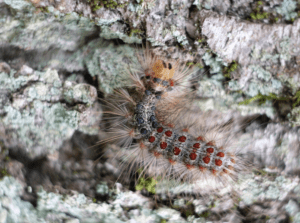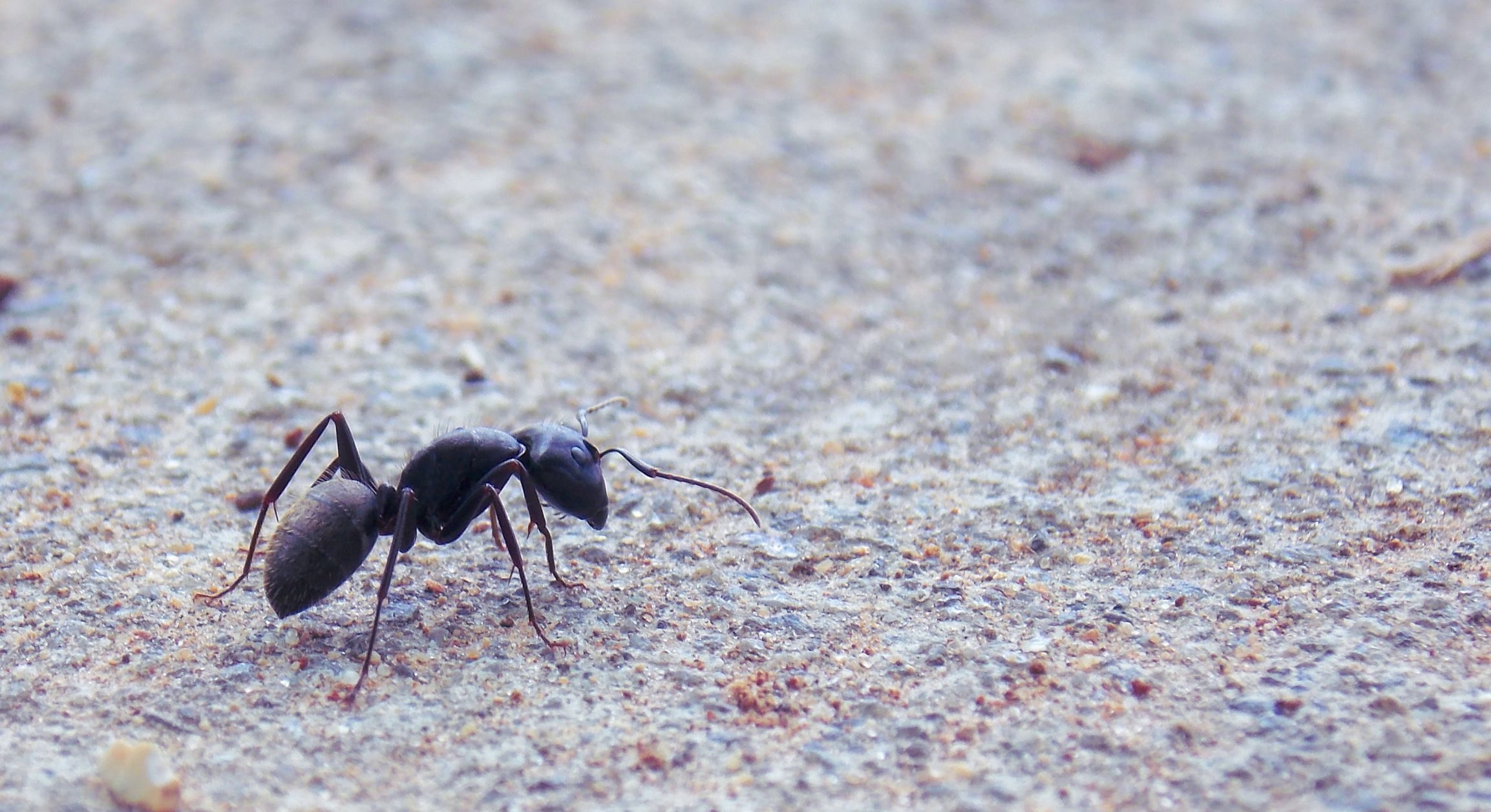

Black Carpenter Ants VS Black Ants: How Are They Different?
February 27, 2023
Did you know there are more than 12,000 species of ants? With ants being such a diverse class of insects, it can be difficult to tell one species from the next. Two species that are often mistaken for one another are black carpenter ants and black ants. These are also two of the most commonly encountered species in human habitats, so to help simplify their identification, we put together the following guide to carpenter ants vs black ants.
Key Differences
- Black Carpenter ants are notably larger than black ants.
- Black Carpenter ants range in color; black ants are always black.
- Black Carpenter ant nests are marked by pinholes in wood and small piles of sawdust; black ant nests are marked by small anthills.
- Black Carpenter ants nest solely in wood; black ants typically nest underground.
- Black Carpenter ants cause far more damage than black ants.
Appearance
Black Carpenter Ants
Black Carpenter ants are members of the genus Camponotus. They are between 6 and 12 mm long. They have a heart-shaped head, a chewing mouthpart, and a pair of bent antennae. Winged carpenter ants, which are called swarmers, have two pairs of transparent, light brown wings. A carpenter ant’s petiole, which is the narrow, waist-like body segment that attaches the thorax and abdomen, has one pointed node. Carpenter ants are generally black, brown, or red in color.
Black Ants
Black ants are members of the genus Lasius. They are roughly half the size of carpenter ants, ranging from 4 to 6 mm long. They have a rounded head, a chewing mouthpart, and a pair of bent antennae. Black ant swarmers have a single pair of transparent, light brown wings. The petiole of a black ant has two pointed nodes. Black ants are of course always black in color.
Habitat
Black Carpenter Ants
Carpenter ants typically live in wooded areas, building colonies that range from 3,000 to more than 100,000 ants. They earned the name “carpenter ants” because they build their nests in wood. They prefer softer wood, so they will typically build their nests in damp or decaying wood sources. Outdoors, they are fond of nesting sites like fallen trees and rotting tree stumps. Carpenter ants often build their nests indoors, as most buildings provide a plethora of wood. Indoor nests can be found in any wooden structures including walls, floors, support beams, furniture, and more.
Black Ants
Black ants also prefer wooded areas, though they can be found almost anywhere including deserts and grasslands. Their colonies range in size from 3,000 to more than 50,000 ants. Unlike carpenter ants, black ants mostly nest outside. They tend to build their nests underground, however they will sometimes build them in rotting wood. Their nests are often found under rocks, logs, or lumber. Black ant nests are distinguishable by the anthill at the entrance of the nest. Their anthills usually look like a small pile of sand or soil with a hole in the middle. If they do nest indoors they prefer protected spots like basements, wall voids, underneath floors, or in air conditioning and heating units.
Behavior and Signs of Activity
Black Carpenter Ants
Black Carpenter ants chew tunnels into wood to create their nests. They are often compared to termites, but there is one key difference between the two: termites eat wood while carpenter ants simply chew through wood and dispose of the sawdust they create. A sure sign of carpenter ants is little piles of sawdust. Other signs include tiny holes in wooden structures, wood that has a chipped or scraped appearance, rustling noises in the walls, shed wings, and ants both dead and alive.
Black Ants
Black ants are mostly seen while foraging for food. As black ants forage, they leave trails marked with pheromones. Their colony-mates will then follow these trails to food sources, creating conga lines of ants. These ant trails are most often seen near food sources and anthills.
Attractants
Black Carpenter Ants
Carpenter ants are mainly attracted to three things: wood, water, and food. Wood is of course attractive for nesting purposes. Water is important for two reasons. One: all insects need some water to survive, and two: water softens wood. Water-damaged wood is a carpenter ant’s favorite nesting spot, which means leaks, clogs, and floods can lead to carpenter ant infestations.
Food is an attractant for virtually any pest. Carpenter ants prefer sugar- or protein-rich foods like syrup, honey, jelly, meats, other insects, and pet food. They will also flock to soda or juice spills.
Black Ants
Black ants are naturally not as attracted to wood as carpenter ants, but they are attracted to many of the same food and water sources. Their diet is rather similar to that of carpenter ants, however they are also quite fond of the honeydew that is produced by aphids, mealybugs, and scale bugs. These bugs can be found feeding on fruit trees, vegetables, shrubs, and flowers like roses or nasturtiums. Landscaping with too many of these plants can lure black ants to your property and lead to an infestation.
Hazards
Black Carpenter Ants
Carpenter ants are far more hazardous than black ants. When carpenter ants build their nests, they do so by digging countless tunnels in the wood source they have chosen. These tunnels hollow out the wood, compromising its structural integrity. Over time, the wood becomes weaker and may eventually collapse. The damage they cause is not only dangerous; it can also cost a pretty penny to repair. Imagine having to restructure your entire house!
In terms of health hazards, carpenter ants are mostly harmless. They are able to bite and spread disease-causing bacteria, however they do not usually do either.
Black Ants
Black ants are considered a nuisance pest, though they do pose some dangers. Like carpenter ants, black ants are able to but do not typically bite or spread disease. Other than these minor hazards, the biggest risk they pose is infesting pantry foods. Black ants actually play an important role in the ecosystem by aerating soil, recycling nutrients, and providing a food source to larger animals.
Prevention
There are several steps you can take to prevent both carpenter and black ants on your property.
- Maintain Proper Landscaping
Ants often use overgrown shrubs and trees as pathways to enter homes and businesses. Keep greenery trimmed and away from outer walls.
- Seal Cracks and Gaps
Seal any small gaps ants could use to enter your home or business. Use a silicone-based caulk to seal cracks in the foundation and walls. Replace torn weather stripping, broken siding, and missing shingles. Check window and door screens for holes. Patch small holes and replace severely damaged screens.
- Replaced Water Damaged Wood
Rotting wood is a major attractant to ants, especially carpenter ants. As such, it is vital to replace all water damaged wood. If possible, use a wood type that is more resistant to water damage like oak, cedar, maple, cherry, or teak.
- Eliminate Food Sources
Ants can detect food from hundreds of miles away, so eliminating potential food sources is extremely important. Seal all stored food, including pet food, in airtight containers. In addition, promptly clean spills and vacuum regularly.
- Limit Excess Moisture
Excess moisture provides a water source to ants and leads to water-damaged wood. Promptly repair all leaky faucets and pipes. In naturally damp areas like basements and crawl spaces, consider using a dehumidifier.
- Landscape With Repellents
Ants will avoid certain scents, so consider landscaping with plants that repel ants like mint, rosemary, catnip, lavender, and thyme.
Now that you know exactly who’s been foraging in your kitchen, it’s time to take action. If you’ve been struggling to keep ants off of your property, give Twin-Boro a call and we’ll solve your ant problem for good. Check out our Ant and Carpenter Ant Pest Control Pages today.






